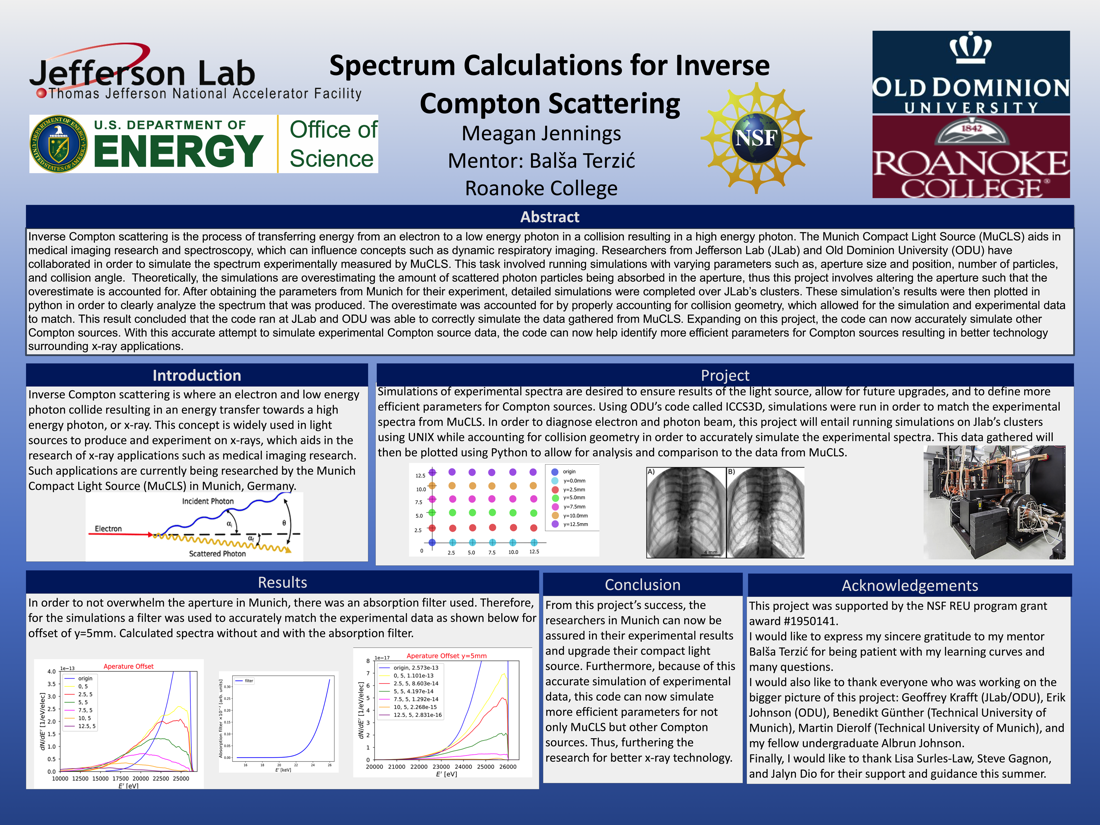Undergraduate Research at Jefferson Lab
Spectrum Calculations for Inverse Compton Scattering
Student: Meagan Jennings
School: Roanoke College
Mentored By: Dr. Balša Terzić
Inverse Compton scattering is the process of transferring energy from an electron to a low energy photon in a collision resulting in a high energy photon. The Munich Compact Light Source (MuCLS) aids in medical imaging research and spectroscopy, which can influence concepts such as dynamic respiratory imaging. Researchers from Jefferson Lab (JLab) and Old Dominion University (ODU) have collaborated in order to simulate the spectrum experimentally measured by MuCLS. This task involved running simulations with varying parameters such as, aperture size and position, number of particles, and collision angle. Theoretically, the simulations are overestimating the amount of scattered photon particles being absorbed in the aperture, thus this project involves altering the aperture such that the overestimate is accounted for. After obtaining the parameters from Munich for their experiment, detailed simulations were completed over JLab's clusters. These simulation's results were then plotted in python in order to clearly analyze the spectrum that was produced. The overestimate was accounted for by properly accounting for collision geometry, which allowed for the simulation and experimental data to match. This result concluded that the code ran at JLab and ODU was able to correctly simulate the data gathered from MuCLS. Expanding on this project, the code can now accurately simulate other Compton sources. With this accurate attempt to simulate experimental Compton source data, the code can now help identify more efficient parameters for Compton sources resulting in better technology surrounding x-ray applications.
[Watch the presentation on YouTube]

Citation and linking information
For questions about this page, please contact Education Web Administrator.
